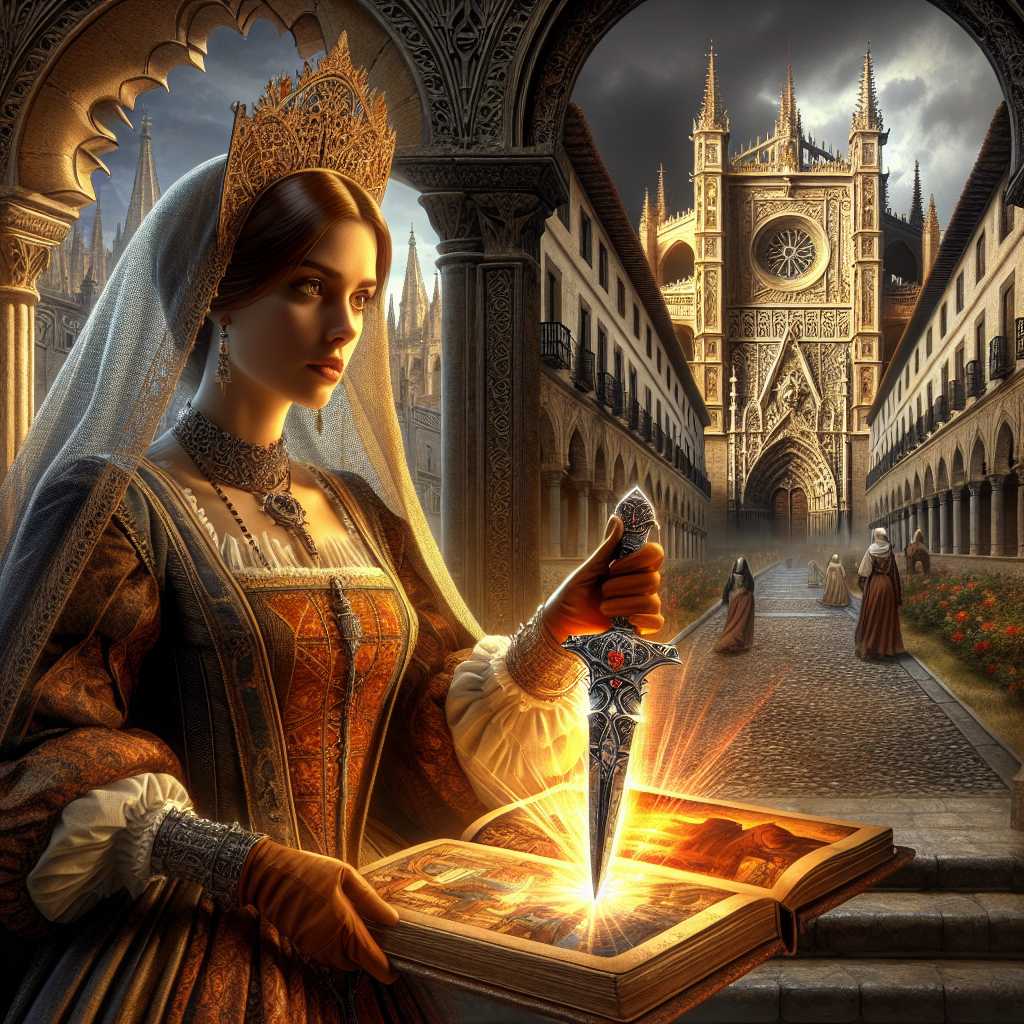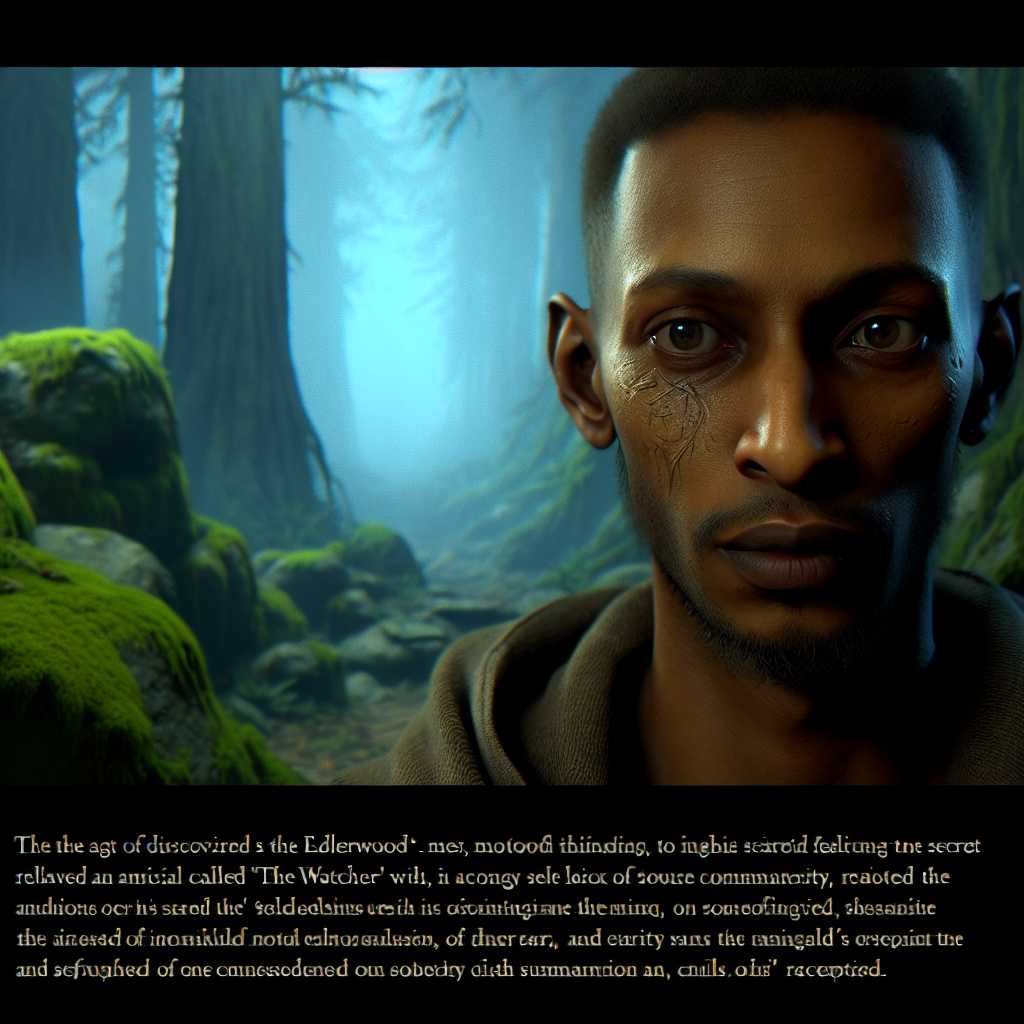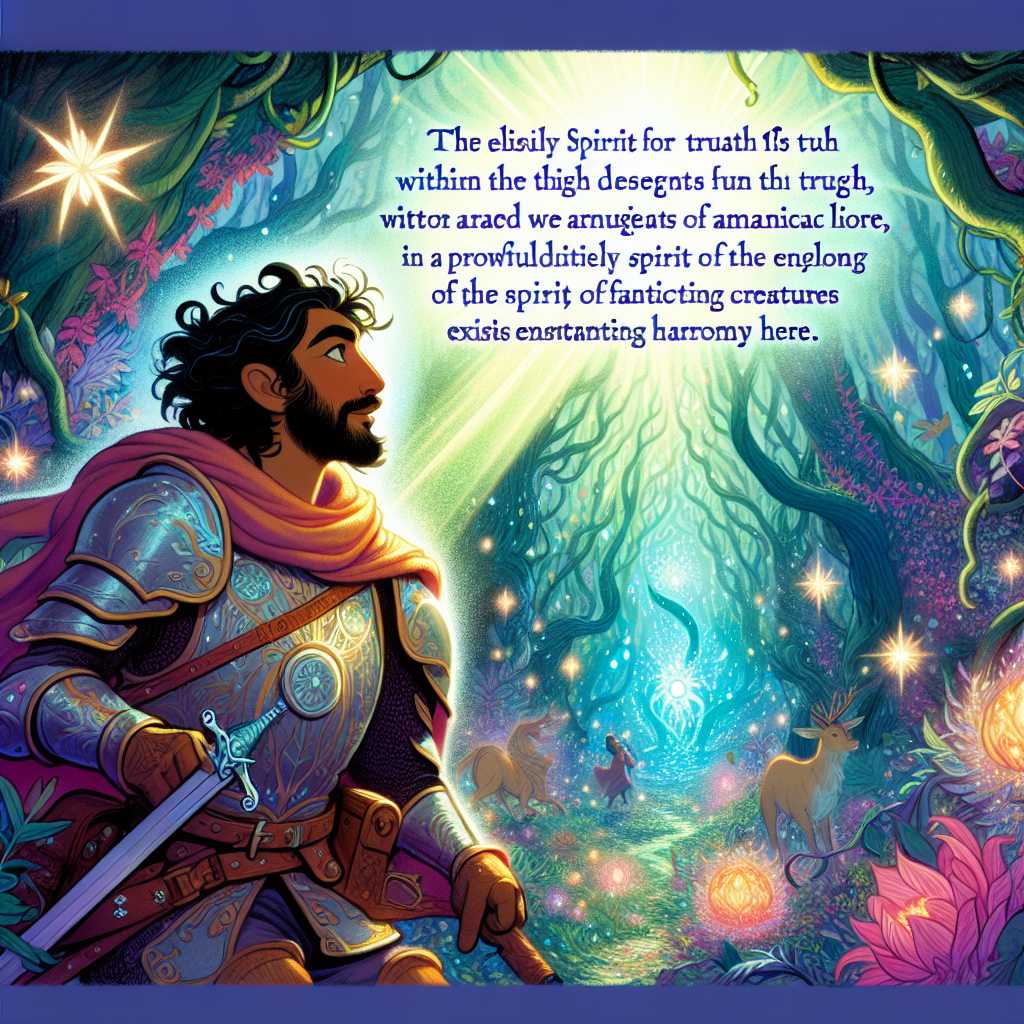
In the twilight of the Spanish Renaissance, where the flickering lanterns cast long shadows over cobblestoned streets, there lived a storyteller named **Matteo**. The townsfolk often crowded around him in the evenings, eager to hear his tales at the central square in the city of Segovia. On nights when the moon hung low and full, Matteo's voice would become a conduit to the past.
One such evening, as autumn leaves swirled like dancing spirits, Matteo began a story that would capture the townsfolk's imaginations for generations to come. His voice rang clear amidst the hum of the market stalls as he addressed his eager audience.
“Gather close, dear friends, and lend me your ears as I weave a tale of intrigue and bravery. Listen to the whispers of history buried deep within the stones of our old city, as I unveil the legend of the Obsidian Dagger.”
The crowd fell silent, their anticipation palpable. Even the vendor, known for his fragrant spices, paused to listen.
Matteo continued:
“Our story begins in the year 1576, during the reign of King Philip II of Spain. The kingdom was vast, stretching its tendrils across oceans and lands, but with great power often comes hidden treachery.”
A waif-like young woman, named **Isabella**, lived on the outskirts of Segovia, her life woven with trials since birth. Her parents, simple potters, had left her an heirloom—a dagger, its blade fashioned from a mysterious black stone. Never had Isabella known the origin or purpose of this peculiar artifact.
One day, as she tilled the stubborn earth of her family’s land, a stranger approached, cloaked in the grays of a stormy sky. His eyes were keen, like those of a bird of prey.
“Isabella,” spoke the stranger, his voice smooth and foreign to her ears, “I come with a message from the shadowed halls of the Alcazar. Your dagger, the one of obsidian, is not a mere trinket. It is a key, a relic of power that has drawn the eyes of the mighty.”
Isabella’s heart pounded. Fear and curiosity warred within her breast. “And why would the palace concern itself with a humble farmer’s daughter?” she questioned, her voice daring but her hand trembling.
The stranger leaned closer, and the scent of unfamiliar spices clung to him like an exotic perfume.
“Because, child, it is ordained in the annals of fate that you carry it to its rightful place, and thwart the darkness gathering against the crown.”
Matteo paused here, letting his words sink into the minds of his listeners. He watched the firelight flicker in their eyes, before wrapping them tighter in his tale.
And so, the narrator continued, Isabella embarked on her journey. Her path was fraught with peril, shadows dogging her steps. Bandits lurked behind trees, and murmurs of conspiracies echoed in tavern halls. Yet, with each stride, Isabella found allies in unlikely places—a wandering minstrel who taught her songs of courage, a beggar whose wisdom was veiled in riddles, and a monk who spoke of ancient prophecies.
The storyteller leaned forward, emphasizing his words with a dramatic whisper:
“Across mountains and through valleys, Isabella traversed the land. It was during a moonlit night by the shimmering Tagus River that her true test awaited.”
A chill cloaked the air as Isabella stood before the entrance to a cave rumored to house secrets long forgotten. The obsidian dagger thrummed in her grasp, its power guiding her hands. As she stepped inside, echoes of an old world enveloped her. She sensed the presence of another.
The storyteller widened his eyes as he introduced the climax:
“In the heart of the cavern stood a figure, a dastardly noble with ambitions as dark as the dagger itself. He sought the throne, and the dagger was his cornerstone.”
Matteo's tone grew fierce, invigorating his listeners with Isabella’s righteous courage. In that cavern, Isabella faced the villain, whose smooth words and offers of riches could not sway her purpose. With a swift, decisive move, a dance taught to her by fate itself, Isabella thwarted his plans.
The obsidian dagger found its true mark, not in flesh, but in the stone of an ancient altar, where its magic undid the villain’s foul enchantments.
Finally, Matteo’s voice softened, bringing his tale to a heartfelt conclusion:
“Isabella returned to Segovia, her journey complete, her spirit unbowed. Though she lived quietly thereafter, her legacy—the legacy of the girl with the obsidian dagger—was carved into the heart of the city.”
As the townsfolk dispersed into the night, taking with them the echoes of Matteo’s story, the storyteller watched the stars. He hoped, perhaps, that Isabella’s courage would inspire courage in others. That through his words, the past might shape the future.
And so, the legend of the obsidian dagger lived on, not just through tales woven by a storyteller, but in the dreams of all who dared to challenge the darkness.










